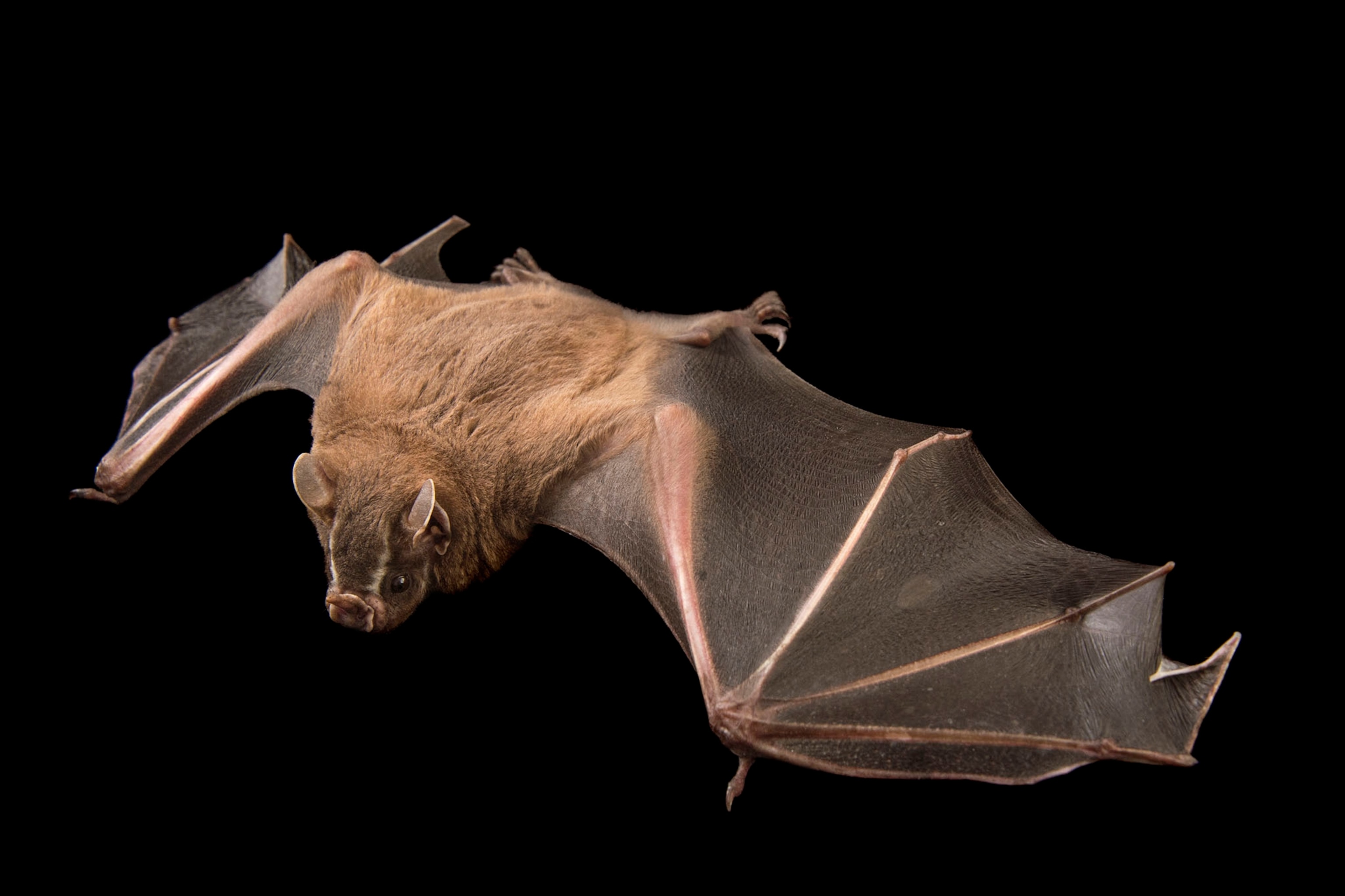















16 Incredible Pictures Show the Beauty of Bats
In honor of Bat Appreciation Day, see up-close photos of these majestic flying mammals.
Few animals have captured the imagination like bats. From superheroes to vampires, bats' unique characteristics have inspired fascination for centuries, but in real life, they play a critical role in maintaining a healthy ecosystem.
In addition to controlling bug populations, bats are a critical source of pollination. In the Southwest U.S. and in Mexico, they pollinate agave plants, making them essential for tequila production.
Bats have uniquely adapted to their environment. It's a common misconception that they're blind (and in fact they see three times better than people), but during the night they rely primarily on their ears. Their screeches allow them to echolocate, or create a sonar map of their surroundings.
With the heaviest wings of any flying animal, bats have developed unique acrobatics to land upside down in their resting position. With one wing pulled close to its body and the other extended, a bat uses inertia to swing upside down in only a fraction of a second.
Bat Appreciation Day, which falls on April 17, puts a spotlight on the flying mammals. The U.S. Department of Energy uses the seemingly playful holiday to highlight the issues facing the nation's bat populations.
Fatalities caused by wind turbines have become increasingly common since the increased use of wind energy. As many as hundreds of thousands of migratory bats may be dying every year because of wind turbines. Bats, which use sonar to navigate, collide with turbine blades when they fly too close.
Reducing wind turbine speeds during peak migration and broadcasting ultrasonic sounds have helped mitigate the number of bats killed annually. However, many bats still face threats from urban sprawl and white-nose syndrome, a fungus that grows on bats during winter hibernation and can lead to their starvation.
Related Topics
You May Also Like
Go Further
Animals
- Octopuses have a lot of secrets. Can you guess 8 of them?
- Animals
- Feature
Octopuses have a lot of secrets. Can you guess 8 of them? - This biologist and her rescue dog help protect bears in the AndesThis biologist and her rescue dog help protect bears in the Andes
- An octopus invited this writer into her tank—and her secret worldAn octopus invited this writer into her tank—and her secret world
- Peace-loving bonobos are more aggressive than we thoughtPeace-loving bonobos are more aggressive than we thought
Environment
- Listen to 30 years of climate change transformed into haunting musicListen to 30 years of climate change transformed into haunting music
- This ancient society tried to stop El Niño—with child sacrificeThis ancient society tried to stop El Niño—with child sacrifice
- U.S. plans to clean its drinking water. What does that mean?U.S. plans to clean its drinking water. What does that mean?
- Food systems: supporting the triangle of food security, Video Story
- Paid Content
Food systems: supporting the triangle of food security - Will we ever solve the mystery of the Mima mounds?Will we ever solve the mystery of the Mima mounds?
- Are synthetic diamonds really better for the planet?Are synthetic diamonds really better for the planet?
History & Culture
- Strange clues in a Maya temple reveal a fiery political dramaStrange clues in a Maya temple reveal a fiery political drama
- How technology is revealing secrets in these ancient scrollsHow technology is revealing secrets in these ancient scrolls
- Pilgrimages aren’t just spiritual anymore. They’re a workout.Pilgrimages aren’t just spiritual anymore. They’re a workout.
- This ancient society tried to stop El Niño—with child sacrificeThis ancient society tried to stop El Niño—with child sacrifice
- This ancient cure was just revived in a lab. Does it work?This ancient cure was just revived in a lab. Does it work?
- See how ancient Indigenous artists left their markSee how ancient Indigenous artists left their mark
Science
- Do you have an inner monologue? Here’s what it reveals about you.Do you have an inner monologue? Here’s what it reveals about you.
- Jupiter’s volcanic moon Io has been erupting for billions of yearsJupiter’s volcanic moon Io has been erupting for billions of years
- This 80-foot-long sea monster was the killer whale of its timeThis 80-foot-long sea monster was the killer whale of its time
- Every 80 years, this star appears in the sky—and it’s almost timeEvery 80 years, this star appears in the sky—and it’s almost time
- How do you create your own ‘Blue Zone’? Here are 6 tipsHow do you create your own ‘Blue Zone’? Here are 6 tips
Travel
- This town is the Alps' first European Capital of CultureThis town is the Alps' first European Capital of Culture
- This royal city lies in the shadow of Kuala LumpurThis royal city lies in the shadow of Kuala Lumpur
- This author tells the story of crypto-trading Mongolian nomadsThis author tells the story of crypto-trading Mongolian nomads




